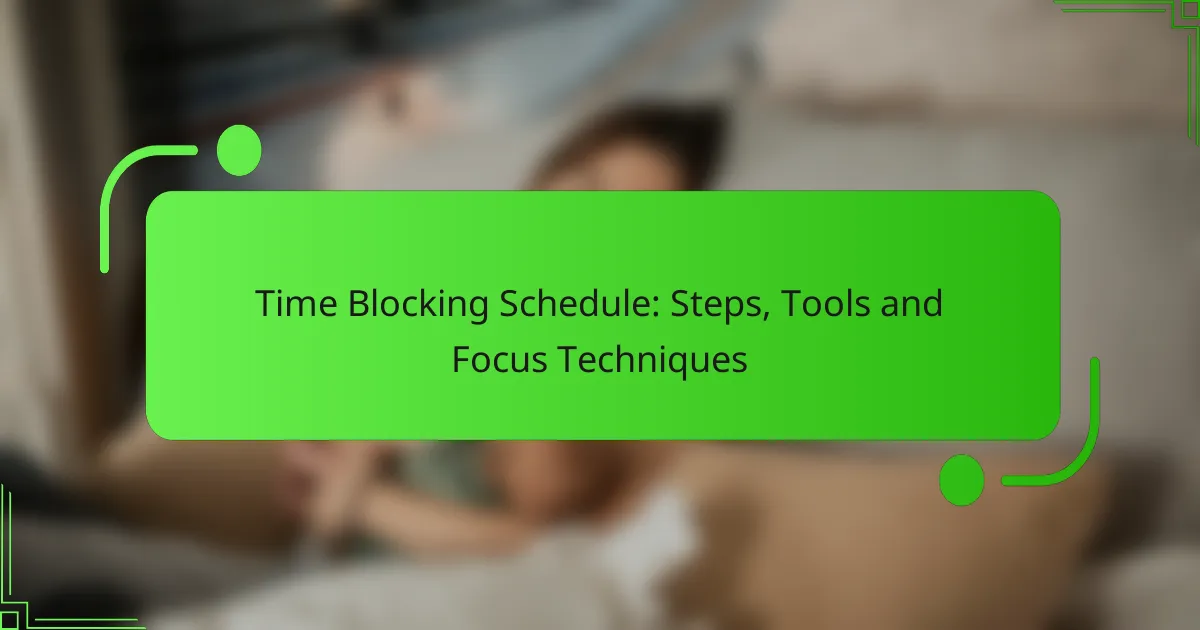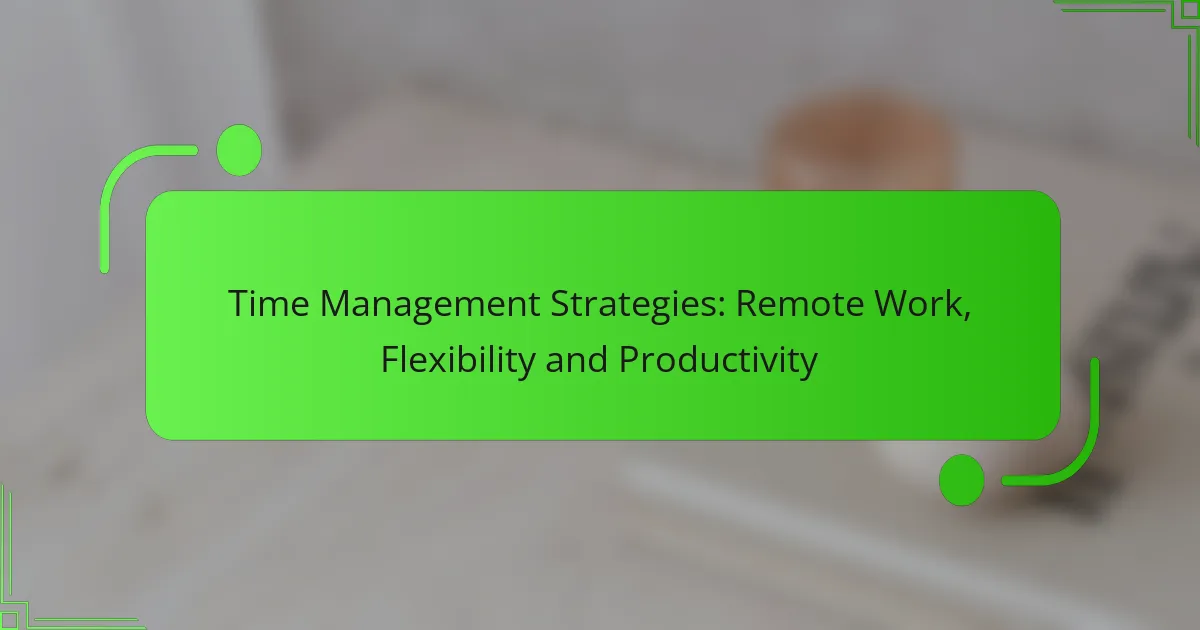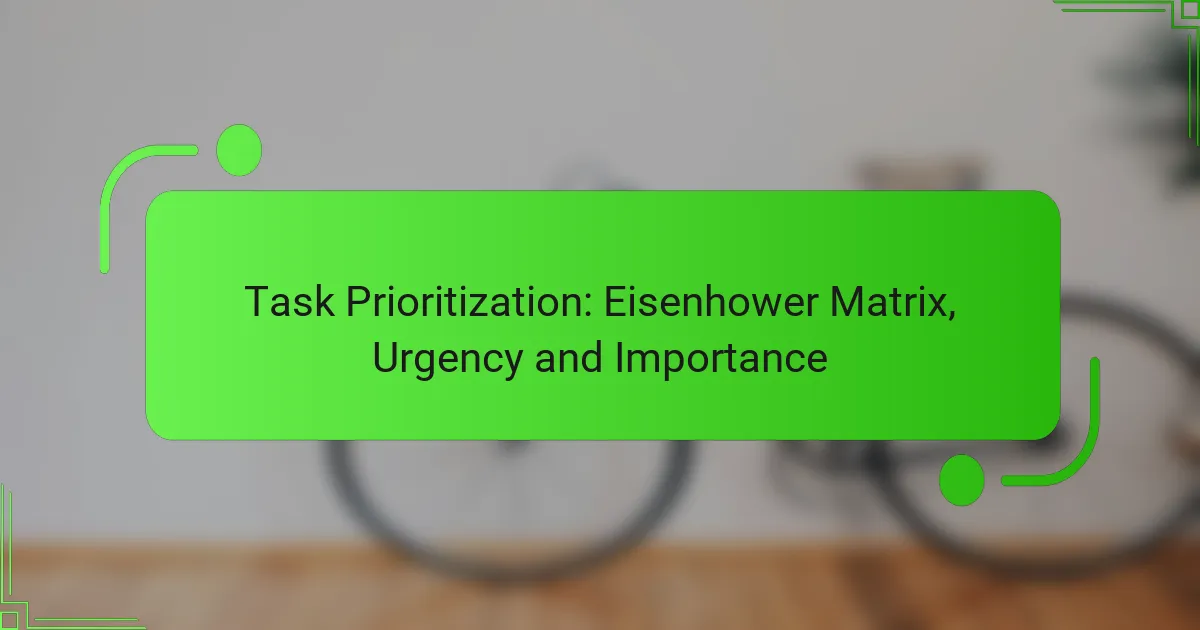Time blocking is a powerful scheduling technique that involves dedicating specific time slots to various tasks, enhancing focus and productivity by reducing distractions. By utilizing effective tools and techniques, you can optimize your workflow and ensure that you stay aligned with your priorities throughout the day. Implementing strategies like the Pomodoro Technique can further enhance your concentration during these dedicated work periods.
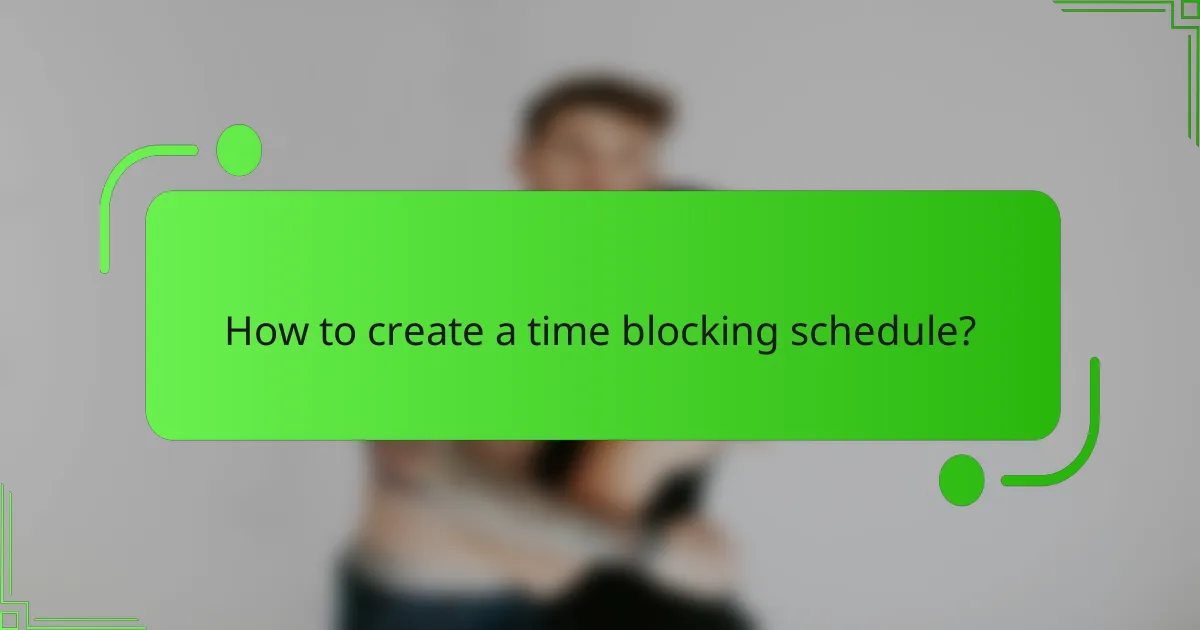
How to create a time blocking schedule?
Creating a time blocking schedule involves allocating specific blocks of time for different tasks throughout your day. This method helps enhance focus and productivity by minimizing distractions and providing a clear structure for your work.
Identify your priorities
Start by listing your most important tasks and goals. Prioritizing helps you determine which activities deserve dedicated time blocks and which can be scheduled more flexibly. Consider using a simple matrix to categorize tasks by urgency and importance.
For example, tasks that are both urgent and important should be scheduled first, while those that are neither can be deprioritized. This approach ensures that your time blocking schedule aligns with your overall objectives.
Set specific time slots
Assign specific time slots for each task based on your priorities. Aim for blocks of 30 minutes to 2 hours, depending on the complexity of the task and your attention span. Be realistic about how much you can accomplish in each block to avoid frustration.
For instance, if you know that you can focus best in the morning, schedule your most challenging tasks during that time. Leave shorter blocks for routine tasks or breaks to maintain energy levels throughout the day.
Use a digital calendar
A digital calendar can streamline your time blocking schedule by allowing easy adjustments and reminders. Tools like Google Calendar or Microsoft Outlook offer features to color-code tasks and set alerts, helping you stay organized and on track.
Consider sharing your calendar with colleagues or family members if collaboration is necessary. This transparency can help manage expectations and reduce scheduling conflicts.
Review and adjust regularly
Regularly reviewing your time blocking schedule is crucial for continuous improvement. Set aside time weekly to assess what worked, what didn’t, and how you can optimize your blocks for better productivity.
Be flexible and willing to adjust your schedule as needed. Life can be unpredictable, so adapting your time blocks to accommodate new priorities or unexpected events is essential for maintaining an effective routine.

What tools can enhance time blocking?
Several tools can significantly improve your time blocking efficiency by helping you organize tasks, set reminders, and visualize your schedule. Utilizing the right applications can streamline your workflow and ensure you stay focused on your priorities.
Google Calendar
Google Calendar is a powerful tool for time blocking, allowing you to create events and allocate specific time slots for tasks. You can color-code different activities, making it easy to distinguish between work, personal, and leisure time.
To maximize its effectiveness, set reminders for each block and use the “repeat” feature for recurring tasks. This helps maintain consistency in your schedule, ensuring you dedicate time to essential activities regularly.
Trello for task management
Trello is an excellent platform for visual task management, using boards, lists, and cards to organize your workload. You can create a board specifically for time blocking, where each list represents a day or week, and cards represent tasks to be completed within those time frames.
Consider using labels and due dates to prioritize tasks and keep track of deadlines. This visual approach can help you quickly assess what needs attention and adjust your time blocks accordingly.
Todoist for reminders
Todoist is a versatile task management app that excels at setting reminders for your time-blocked tasks. You can create tasks with specific due dates and times, ensuring you receive notifications when it’s time to start working on them.
Utilize features like recurring tasks and priority levels to manage your workload effectively. This helps you stay on track and prevents tasks from slipping through the cracks, enhancing your overall productivity during time blocking sessions.

What are effective focus techniques for time blocking?
Effective focus techniques for time blocking help individuals maintain concentration and maximize productivity during scheduled work periods. By implementing strategies such as the Pomodoro Technique, mindfulness practices, and minimizing distractions, you can enhance your ability to stay focused and make the most of your time blocks.
Pomodoro Technique
The Pomodoro Technique involves working in short, focused bursts of typically 25 minutes, followed by a 5-minute break. This method helps maintain high levels of concentration while preventing burnout. After completing four cycles, take a longer break of 15 to 30 minutes to recharge.
To implement this technique, set a timer for your work sessions and breaks. Use a simple kitchen timer or a dedicated app to keep track. This structure can help you stay committed to your tasks and manage your time effectively.
Mindfulness practices
Mindfulness practices, such as meditation or deep breathing exercises, can significantly enhance your focus during time blocking. By training your mind to remain present, you reduce stress and improve your ability to concentrate on the task at hand. Even a few minutes of mindfulness before starting your work can set a productive tone.
Consider incorporating short mindfulness sessions into your daily routine. Apps like Headspace or Calm offer guided sessions that can fit into your schedule. Regular practice can lead to improved focus and better management of distractions.
Minimize distractions
Minimizing distractions is crucial for effective time blocking. Identify common interruptions, such as phone notifications or noisy environments, and take steps to eliminate them. This could mean silencing your phone, using noise-canceling headphones, or creating a dedicated workspace.
Establish clear boundaries with others during your time blocks. Communicate your schedule to family or colleagues to reduce interruptions. Additionally, consider using website blockers to limit access to distracting sites during your focused work periods.
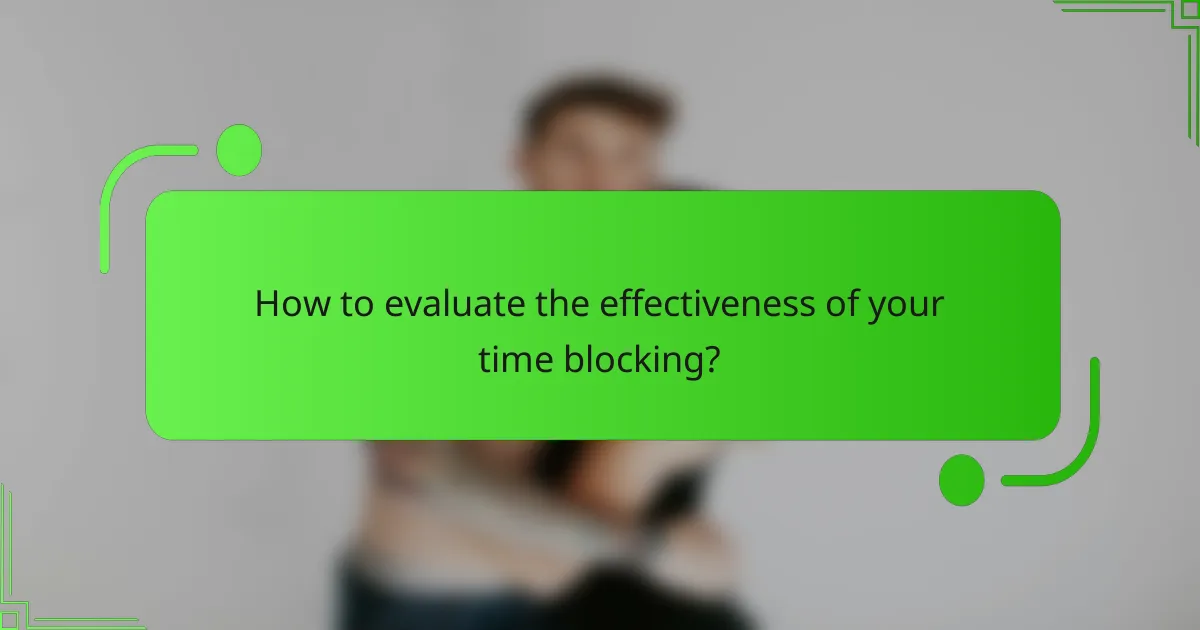
How to evaluate the effectiveness of your time blocking?
To evaluate the effectiveness of your time blocking, regularly review your completed tasks and compare the time spent on activities against your planned schedule. This assessment helps identify patterns, areas for improvement, and whether your time management aligns with your goals.
Track completed tasks
Begin by maintaining a detailed log of tasks you complete during each time block. This log should include the task name, duration, and any notes on interruptions or distractions. Regularly reviewing this log can reveal how productive you are and highlight tasks that consistently take longer than expected.
Consider using digital tools or apps that allow you to categorize and visualize your completed tasks. This can make it easier to spot trends over time, such as recurring tasks that may need more focused time blocks or adjustments in your approach.
Assess time spent vs. planned
After tracking completed tasks, compare the actual time spent on each task against your initial time estimates. This assessment can help you understand where your planning may be off and whether certain tasks require more or less time than anticipated.
To facilitate this comparison, create a simple table that lists each task, the planned time, and the actual time spent. This visual representation can quickly highlight discrepancies and guide future adjustments to your time blocking strategy.

What are the prerequisites for successful time blocking?
Successful time blocking requires clear goals and an understanding of your personal productivity patterns. These elements help you allocate your time effectively and maintain focus throughout the day.
Clear goal setting
Setting clear goals is essential for effective time blocking. Define specific, measurable, achievable, relevant, and time-bound (SMART) objectives to guide your daily activities. For example, instead of saying “work on project,” specify “complete the first draft of the project report by 3 PM.”
Break larger goals into smaller tasks to make them more manageable. This approach allows you to allocate dedicated time blocks for each task, ensuring steady progress and reducing overwhelm.
Understanding personal productivity patterns
Recognizing your personal productivity patterns is crucial for effective time blocking. Identify when you are most alert and focused during the day, whether it’s in the morning, afternoon, or evening. Use this insight to schedule your most challenging tasks during peak productivity times.
Consider experimenting with different time blocks to find what works best for you. For instance, you might find that working in 90-minute intervals with short breaks enhances your concentration. Adjust your schedule based on these observations to optimize your time management.
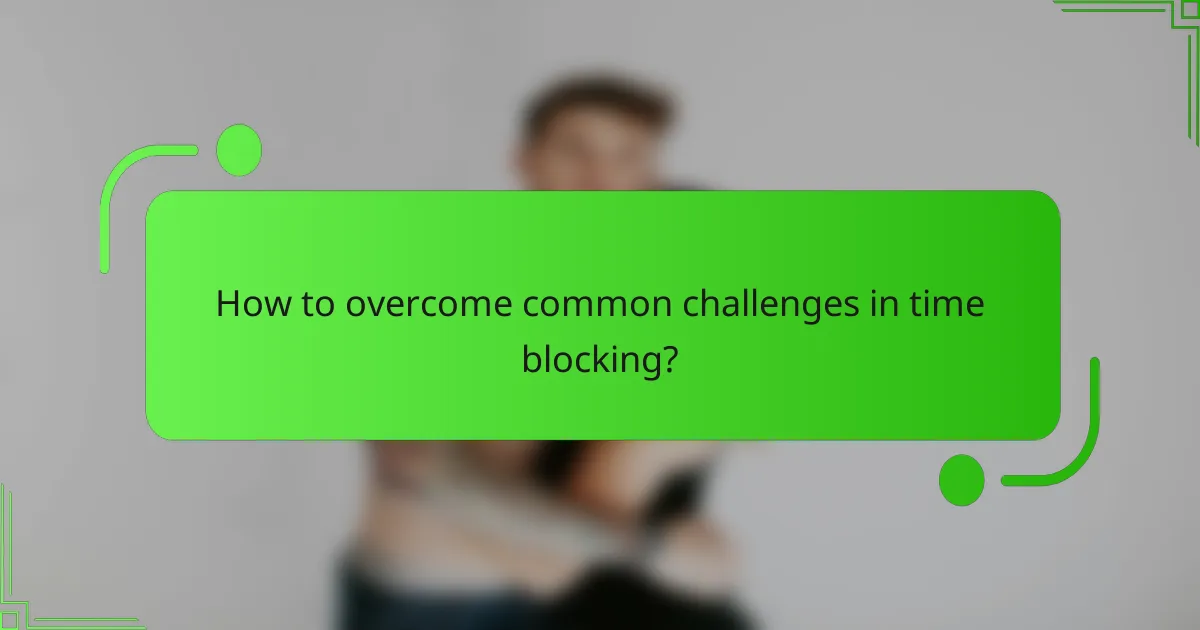
How to overcome common challenges in time blocking?
To effectively overcome common challenges in time blocking, it’s essential to anticipate interruptions and maintain commitment to your schedule. By implementing specific strategies, you can enhance your focus and productivity while minimizing distractions.
Dealing with interruptions
Interruptions can significantly disrupt your time blocking efforts. To manage them, identify potential sources of distractions, such as phone notifications or unscheduled meetings, and take proactive steps to minimize their impact.
Consider setting boundaries with colleagues or family members during your focused work periods. Communicating your schedule can help others respect your time and reduce unexpected interruptions.
Additionally, use tools like “Do Not Disturb” modes on devices or dedicated workspaces to create an environment conducive to concentration. This can help you stay on track and maintain your productivity levels.
Staying committed to the schedule
Maintaining commitment to your time blocking schedule requires discipline and consistency. Start by setting realistic goals for each block of time, ensuring they are achievable within the designated period.
Utilize reminders and timers to keep you accountable. For example, using a timer for 25-minute work sessions followed by short breaks can enhance focus and prevent burnout, a technique known as the Pomodoro Technique.
Regularly review your progress and adjust your schedule as needed. If certain tasks consistently take longer than expected, reassess your time estimates and make necessary changes to improve your planning accuracy.
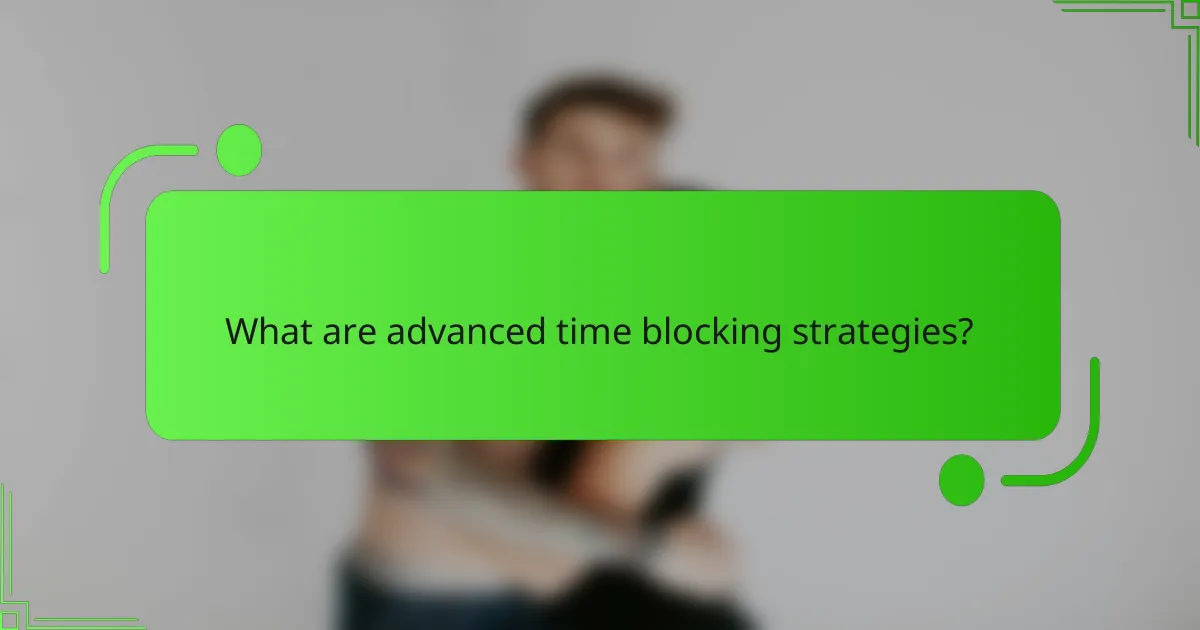
What are advanced time blocking strategies?
Advanced time blocking strategies involve organizing your schedule into dedicated blocks of time for specific tasks or activities, enhancing productivity and focus. These techniques help in minimizing distractions and optimizing workflow by prioritizing similar tasks and creating structured routines.
Batch processing similar tasks
Batch processing similar tasks means grouping related activities together and tackling them in one focused session. This approach reduces the cognitive load of switching between different types of tasks, allowing for deeper concentration and efficiency.
To implement batch processing, identify tasks that share common characteristics, such as responding to emails, making phone calls, or conducting research. Allocate specific time blocks for each category, ensuring you have uninterrupted periods to complete these tasks. For example, you might set aside two hours in the morning for all email correspondence.
Be mindful of potential pitfalls, such as overloading your schedule with too many tasks in one block. Aim for a balance that allows for breaks and flexibility. A good rule of thumb is to limit each batch to no more than three different types of tasks to maintain focus and effectiveness.
